
How to Use fan: Examples, Pinouts, and Specs
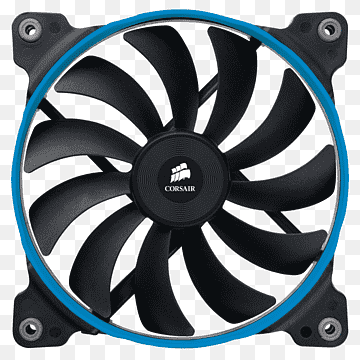
 Design with fan in Cirkit Designer
Design with fan in Cirkit DesignerIntroduction
A fan, manufactured by XYZ (Part ID: FAN), is an electromechanical device designed to create airflow for cooling or ventilation purposes. It is commonly used in electronic enclosures, power supplies, and other systems to dissipate heat and maintain optimal operating temperatures. By preventing overheating, fans help ensure the longevity and reliability of electronic components.
Explore Projects Built with fan
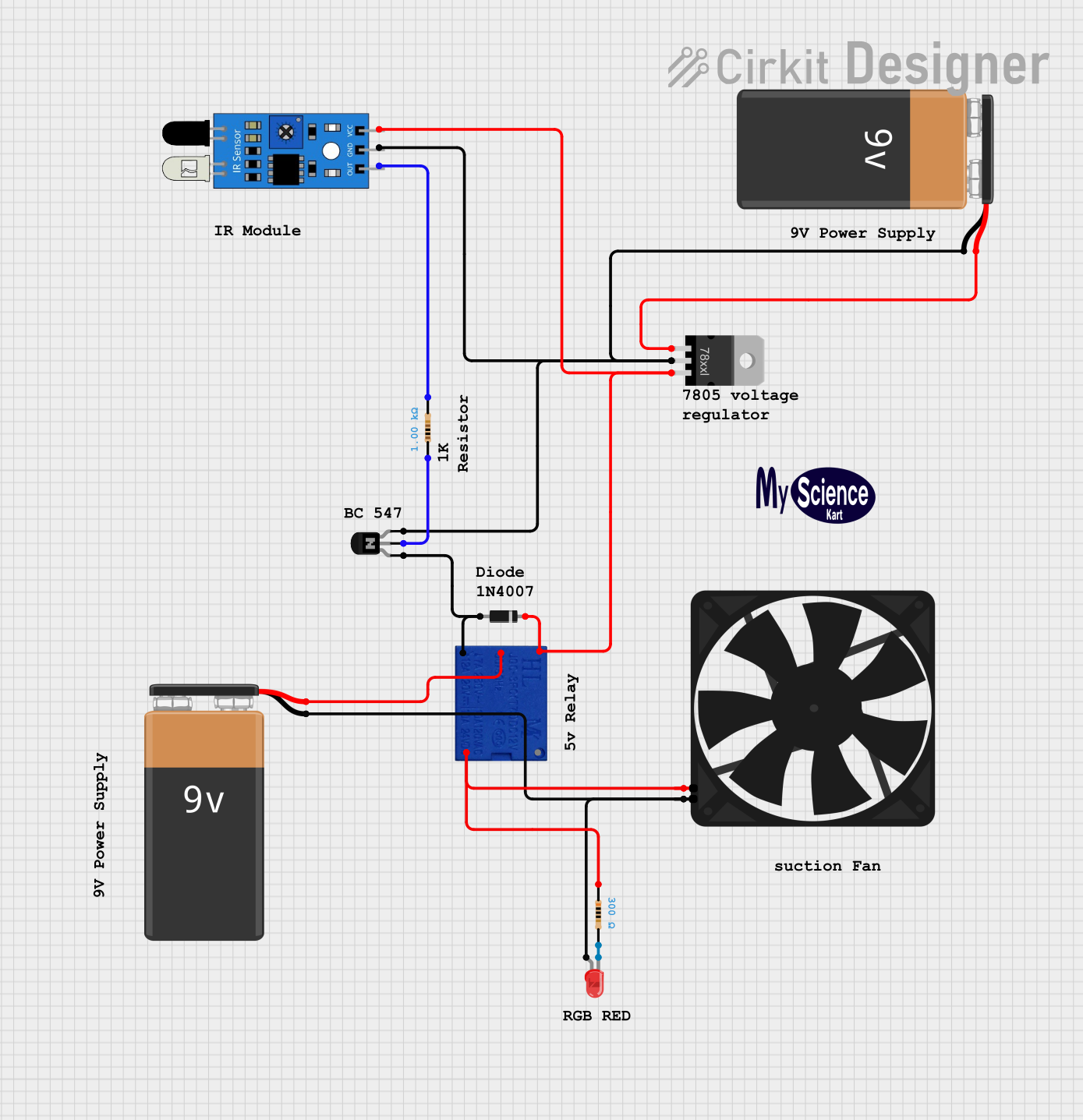
 Open Project in Cirkit Designer
Open Project in Cirkit Designer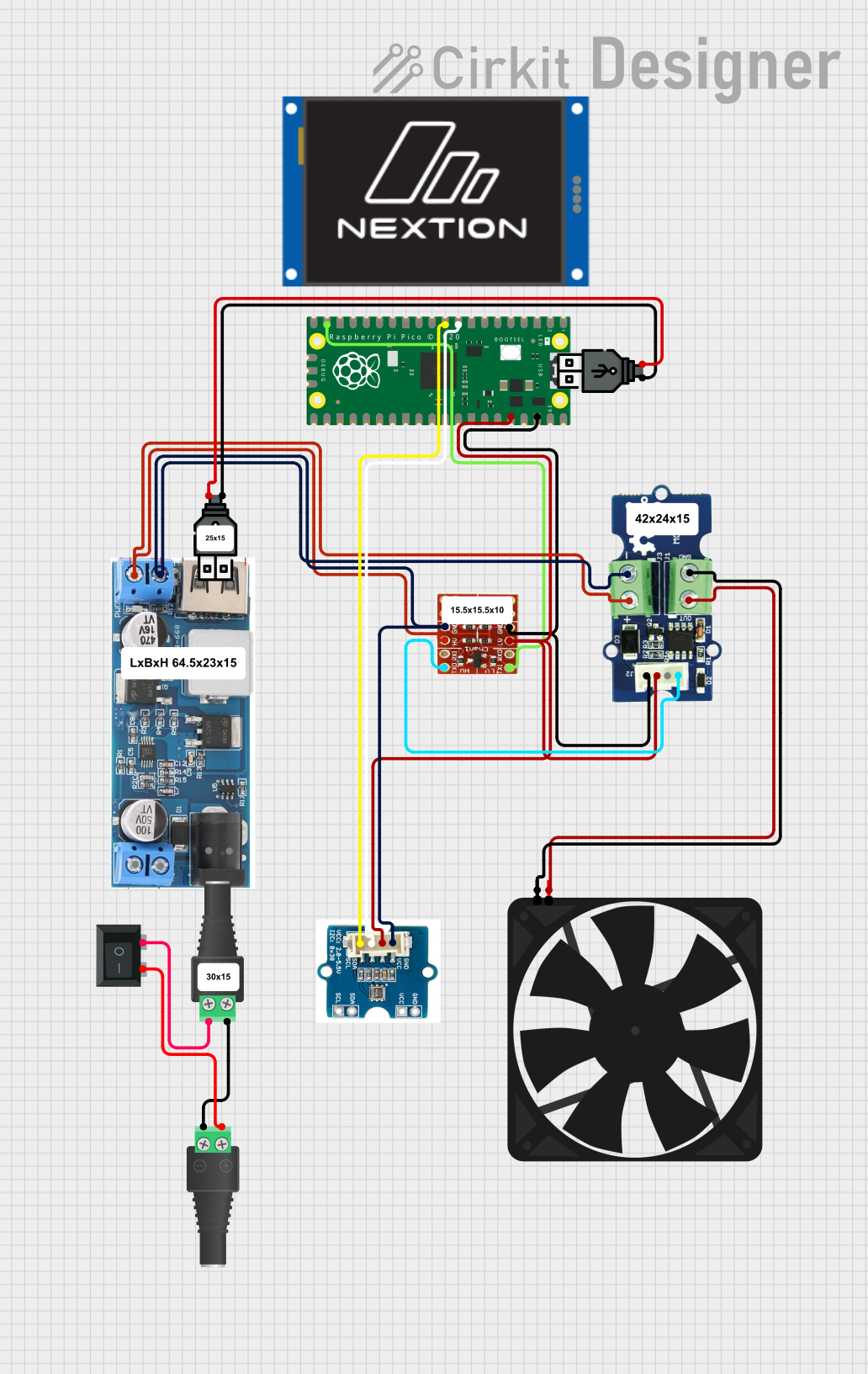
 Open Project in Cirkit Designer
Open Project in Cirkit Designer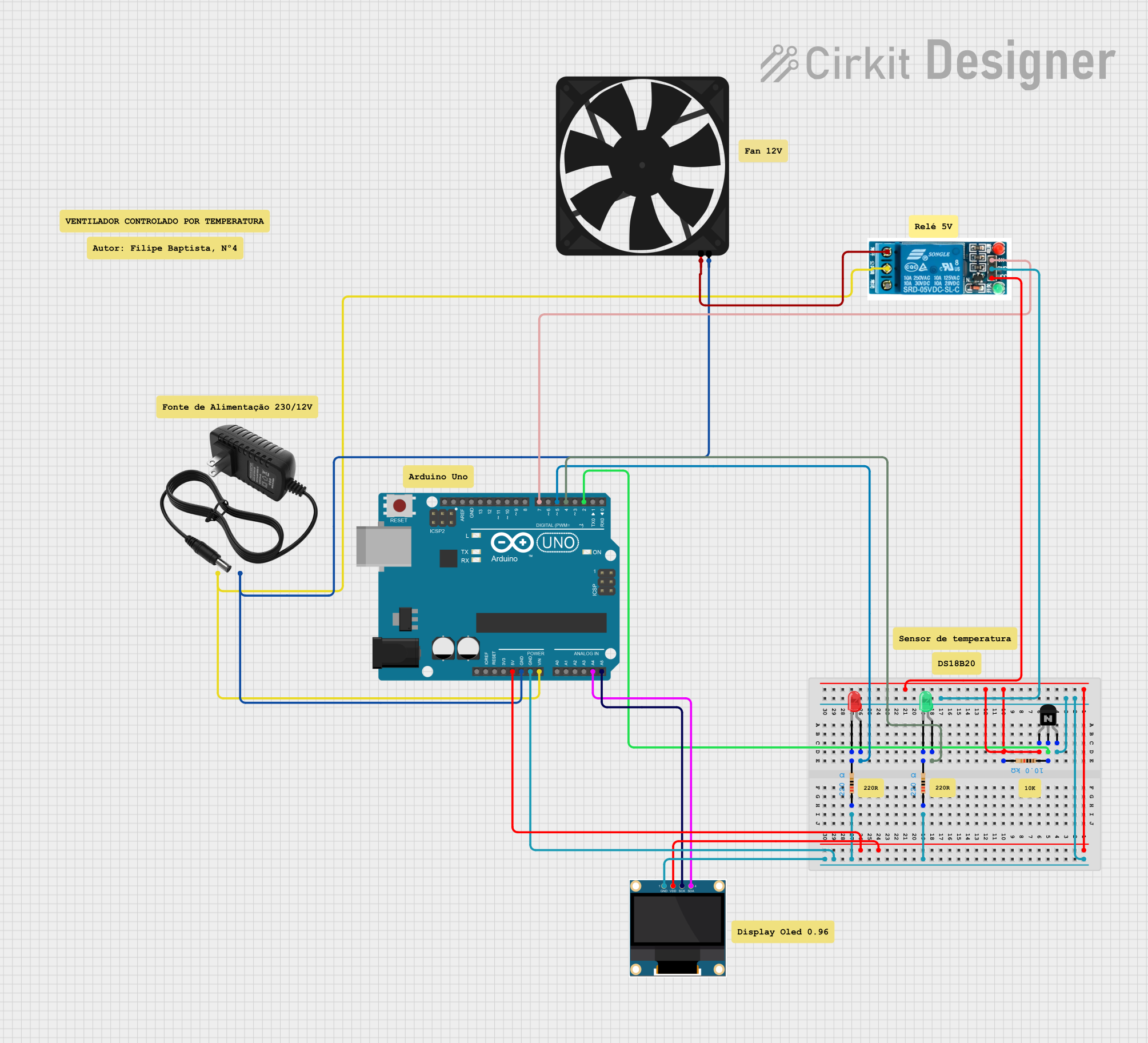
 Open Project in Cirkit Designer
Open Project in Cirkit Designer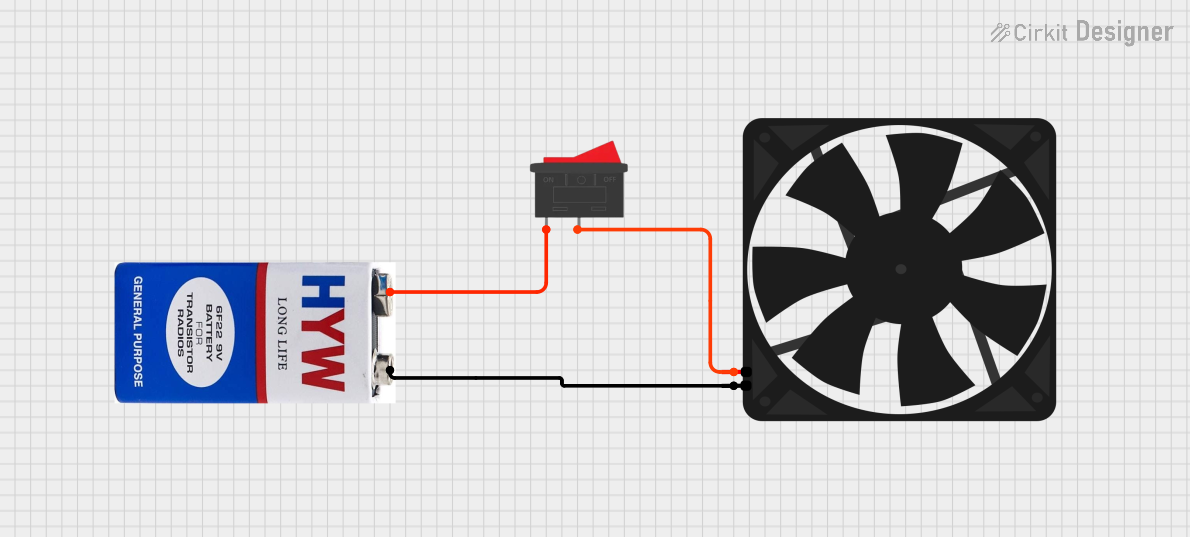
 Open Project in Cirkit Designer
Open Project in Cirkit DesignerExplore Projects Built with fan

 Open Project in Cirkit Designer
Open Project in Cirkit Designer
 Open Project in Cirkit Designer
Open Project in Cirkit Designer
 Open Project in Cirkit Designer
Open Project in Cirkit Designer
 Open Project in Cirkit Designer
Open Project in Cirkit DesignerCommon Applications and Use Cases
- Cooling electronic enclosures, such as computer cases and power supplies
- Ventilating industrial equipment and machinery
- Enhancing airflow in HVAC systems
- Dissipating heat in LED lighting systems
- General-purpose cooling in robotics and DIY electronics projects
Technical Specifications
Below are the key technical details for the XYZ FAN:
| Parameter | Value |
|---|---|
| Operating Voltage | 5V DC / 12V DC / 24V DC |
| Current Consumption | 0.1A to 0.5A (depending on model) |
| Power Rating | 0.5W to 6W |
| Airflow | 10 CFM to 100 CFM |
| Speed | 1000 RPM to 5000 RPM |
| Noise Level | 20 dBA to 40 dBA |
| Dimensions | 40mm x 40mm, 80mm x 80mm, 120mm x 120mm |
| Bearing Type | Sleeve or Ball Bearing |
| Connector Type | 2-pin, 3-pin, or 4-pin |
| Operating Temperature | -10°C to 70°C |
| Lifespan | 30,000 to 70,000 hours |
Pin Configuration and Descriptions
The fan's pin configuration depends on the connector type. Below are the details:
2-Pin Connector
| Pin | Name | Description |
|---|---|---|
| 1 | VCC | Positive power supply (e.g., 5V, 12V, or 24V) |
| 2 | GND | Ground connection |
3-Pin Connector
| Pin | Name | Description |
|---|---|---|
| 1 | VCC | Positive power supply (e.g., 5V, 12V, or 24V) |
| 2 | GND | Ground connection |
| 3 | Tach | Tachometer output for speed monitoring |
4-Pin Connector (PWM Control)
| Pin | Name | Description |
|---|---|---|
| 1 | VCC | Positive power supply (e.g., 5V, 12V, or 24V) |
| 2 | GND | Ground connection |
| 3 | Tach | Tachometer output for speed monitoring |
| 4 | PWM | Pulse-width modulation input for speed control |
Usage Instructions
How to Use the Fan in a Circuit
- Determine the Operating Voltage: Ensure the fan's voltage rating matches your power supply (e.g., 5V, 12V, or 24V).
- Connect the Power Pins:
- For a 2-pin fan, connect the VCC pin to the positive terminal of the power supply and the GND pin to the ground.
- For a 3-pin or 4-pin fan, connect the VCC and GND pins as above, and optionally use the Tach and PWM pins for advanced functionality.
- Optional Speed Control:
- For a 4-pin fan, use a PWM signal (typically 25kHz) on the PWM pin to control the fan speed.
- For a 3-pin fan, you can monitor the Tach pin to measure the fan's speed.
Important Considerations and Best Practices
- Power Supply: Use a stable power supply to avoid voltage fluctuations that could damage the fan.
- Mounting: Secure the fan using screws or clips to minimize vibration and noise.
- Airflow Direction: Check the fan's markings to ensure proper airflow direction.
- Dust and Maintenance: Periodically clean the fan to remove dust and debris that could reduce performance.
- PWM Signal: If using PWM control, ensure the signal frequency and duty cycle are within the fan's specifications.
Example: Connecting a 4-Pin Fan to an Arduino UNO
Below is an example of how to control a 4-pin fan using an Arduino UNO and PWM:
// Define the PWM pin connected to the fan's PWM input
const int fanPwmPin = 9;
void setup() {
// Set the PWM pin as an output
pinMode(fanPwmPin, OUTPUT);
}
void loop() {
// Set fan speed to 50% (128 out of 255)
analogWrite(fanPwmPin, 128);
delay(5000); // Run at 50% speed for 5 seconds
// Set fan speed to 100% (255 out of 255)
analogWrite(fanPwmPin, 255);
delay(5000); // Run at full speed for 5 seconds
// Set fan speed to 0% (0 out of 255)
analogWrite(fanPwmPin, 0);
delay(5000); // Turn off the fan for 5 seconds
}
Troubleshooting and FAQs
Common Issues and Solutions
Fan Does Not Spin:
- Cause: Incorrect wiring or insufficient power supply.
- Solution: Verify the connections and ensure the power supply matches the fan's voltage rating.
Fan is Noisy:
- Cause: Dust buildup, loose mounting, or worn bearings.
- Solution: Clean the fan, tighten the mounting screws, or replace the fan if the bearings are worn.
Fan Speed is Inconsistent:
- Cause: Unstable power supply or incorrect PWM signal.
- Solution: Use a regulated power supply and verify the PWM signal's frequency and duty cycle.
Fan Overheats:
- Cause: Blocked airflow or excessive load.
- Solution: Ensure proper ventilation and avoid overloading the fan.
FAQs
Q: Can I use a 12V fan with a 5V power supply?
A: No, the fan will not operate correctly. Always match the fan's voltage rating with the power supply.Q: How do I determine the airflow direction?
A: Most fans have arrows on the housing indicating the airflow and blade rotation direction.Q: Can I control a 2-pin fan's speed?
A: No, 2-pin fans do not support speed control. Use a 4-pin fan for PWM-based speed control.Q: What is the lifespan of the fan?
A: The lifespan depends on the bearing type and operating conditions, typically ranging from 30,000 to 70,000 hours.